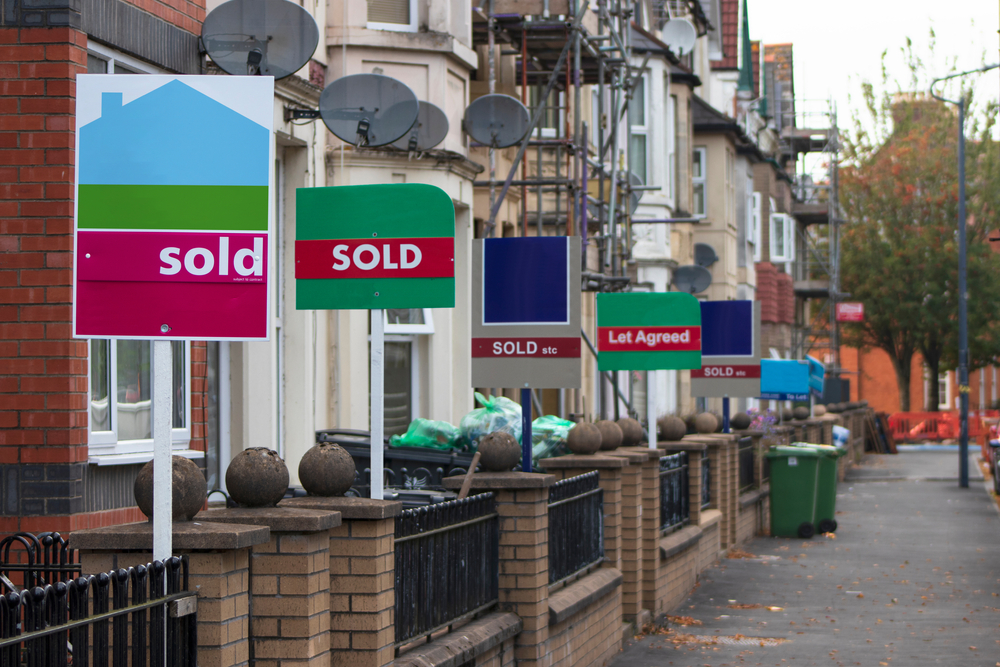Buy To Let
September house price growth still in double digits

Annual house price growth in September was pegged at 10%, the fifth consecutive month of double-digit increases, but down slightly from 11% in August, according to Nationwide.
According to the building society’s house price index, average house prices increased slightly month-on-month by 0.1%, which is down from the 2% monthly rise in August.
The average house price fell slightly from £248,857 in August to £248,742 in September.
According to Nationwide’s chief economist Robert Gardner house prices are 13% higher than before the pandemic in early 2020.
The report added that on a regional level it was a “mixed picture” with Wales, Northern Ireland and Scotland reporting price acceleration whilst most English regions recorded a slowdown.
Wales recorded the strongest annual growth in the third quarter at 15.3%, while Northern Ireland increased 14.3% and Scotland was up 11.6%.
England’s annual house price growth slowed to 8.5% in Q3 from 9.9% in Q2. Yorkshire and the Humberside reported the strongest growth at 12.3% year-on-year, followed by North West with an 11.4% rise over the same period.
London’s annual growth slowed to 4.2% from 7.3% last quarter. The surrounding outer metropolitan region, which includes Luton, Watford, Sevenoaks and Woking, also softened to 6.8% in the third quarter from 8.2% in the second quarter.
MT Finance’s director Tomer Aboody said that despite the annual dip in house price growth, prices were significantly higher than before the pandemic which put the “slowdown in perspective”.
He added: “Although some regions have seen a stronger increase in values, such as Wales, Northern Ireland and some parts of England, these have historically been at a lower pricing point than other regions where growth has been slower.
“Any rise is therefore more visible and significant, although historically this could also be reflected in a declining market, where potentially ‘non-prime’ areas are the first and biggest fallers in percentage points.”
Affordability becoming more ‘stretched’
Gardner said that as house prices continued to rise affordability was more challenging, especially for first-time buyers.
He said that a 20% deposit on a first-time buyer home was around 113% of gross income, a record high.
Gardner added that in 10 out of 13 UK regions, the ratio between typical mortgage payments and home pay was above the long-run average. This compares to before the pandemic when only one region, London, was above the long-run average.
He said: “Recent price patterns suggest an element of rebalancing is occurring where most of the regions that have seen the strongest price growth are those in which affordability is still close to or below the long-run average.”
SPI Capital’s chief executive Anna Clare Harper said competition for customers was high and with banks offering mortgages of up to 100% and around 3,000 products available it was “no surprise that affordability is becoming stretched”.
She added: “For those considering their next property purchase, it’s important to remember one thing: just because you can borrow to acquire property with a low deposit, or at an initially low interest rate, it doesn’t mean you should. Both capital and interest repayments must be paid.
“That said, with rising construction costs, it’s likely that the UK continues to suffer from a shortage of housing stock, which in turn means prices are expected to continue to grow.”
Housing outlook
Gardner said that the outlook towards the end of the year “remains uncertain” but activity would likely dampen for a period after the stamp duty holiday ended in September.
He added: “Moreover, underlying demand is likely to soften around the turn of the year if unemployment rises as government support winds down, as seems likely.
“But this is far from assured. The labour market has remained remarkably resilient to date and, even if it does weaken, there is scope for shifts in housing preferences as a result of the pandemic – such as wanting more space or to relocate – to continue to support activity for some time yet.”
Jeremy Leaf, north London estate agent and a former RICS residential chairman, said the stamp duty concession had brought forward home buying decisions, so prices were not rising as rapidly as it came to an end.
He said: “However, these figures also confirm what we are seeing on the ground, that there is still plenty of life left in the market – in fact, many prefer buying and selling in a less frenzied atmosphere – underpinned by a continuing shortage of stock, particularly of three and four-bedroom family houses.
“Looking forward, we don’t expect to see major changes although the increase in supply is helping to moderate prices further and bring more balance to the market.”